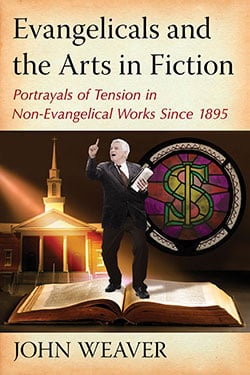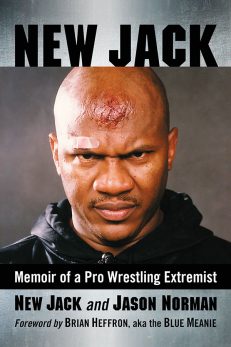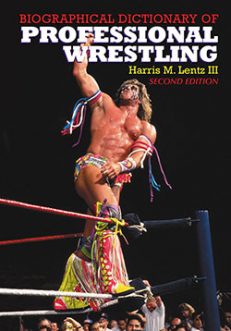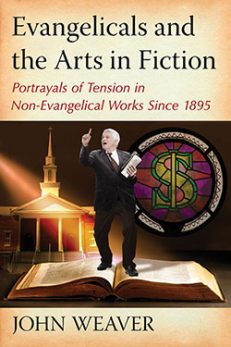Evangelicals and the Arts in Fiction
Portrayals of Tension in Non-Evangelical Works Since 1895
Original price was: $29.95.$23.99Current price is: $23.99.
In stock
About the Book
This book is an exploration of how the relationship of evangelicals to the arts has been portrayed in fiction for the last century. The author argues that evangelicals are consistently seen as enemies of the arts by non-evangelical writers. The artist (typically represented by a literal artist, occasionally by a scientist or reluctant messiah) typically has to fight for liberation from such clichéd character types as the failed evangelical artist, the rube or the hypocritical pastor. Rather than resist the cliché of anti-art evangelicalism, the book contends that evangelicals should embrace it: this stereotype is only hurtful so long as one assumes that the arts represent a positive force in human society. This work, built off the scholarship of John Carey, does not make that assumption.
Surveying the current pro-artistic views of most evangelicals, the author advances the argument that evangelicals need to return to their anti-art roots. By doing so they would align themselves with the most radical artistic elements of modernism rather than with the classicists that the movement currently seems to prefer, and provide space for themselves to critique how secular artistic stereotypes of evangelicals have economically and artistically marginalized the evangelicals’ community.
About the Author(s)
Bibliographic Details
John Weaver
Format: softcover (6 x 9)
Pages: 224
Bibliographic Info: glossary, notes, bibliography, index
Copyright Date: 2013
pISBN: 978-0-7864-7206-2
eISBN: 978-1-4766-0286-8
Imprint: McFarland
Table of Contents
Acknowledgments vi
Preface: Becoming an Iconoclast 1
Introduction: Evangelicalism and Artistry in Conflict 3
1. The Current Crisis of the Evangelical Art World 15
2. Romantic Realism: The Damnation of Evangelicalism 37
3. LonelyHearted Fascists: The Evangelical Community in Disarray 65
4. The Fifties: Creativity and Creationists 84
5. The Age of Fantasy 111
6. Feminisms, Fanaticism and Evangelicalism 142
7. More Problems, Added Possibilities 165
8. You Picks Your Worldview, You Takes Your Chances 188
Glossary 193
Chapter Notes 197
Bibliography 201
Index 211
Book Reviews & Awards
- “Looking both at the evangelical art world and at secular narratives of evangelicalism in the 20th century, he explains why a secular stereotype of anti-art evangelicalism emerged during the late 1920s and persists to the present”—Reference & Research Book News
- “Fascinating…Weaver’s commentary is penetrating and at times even riveting, which is an accomplishment for anyone going through so many novels and films”—The Gospel Coalition





